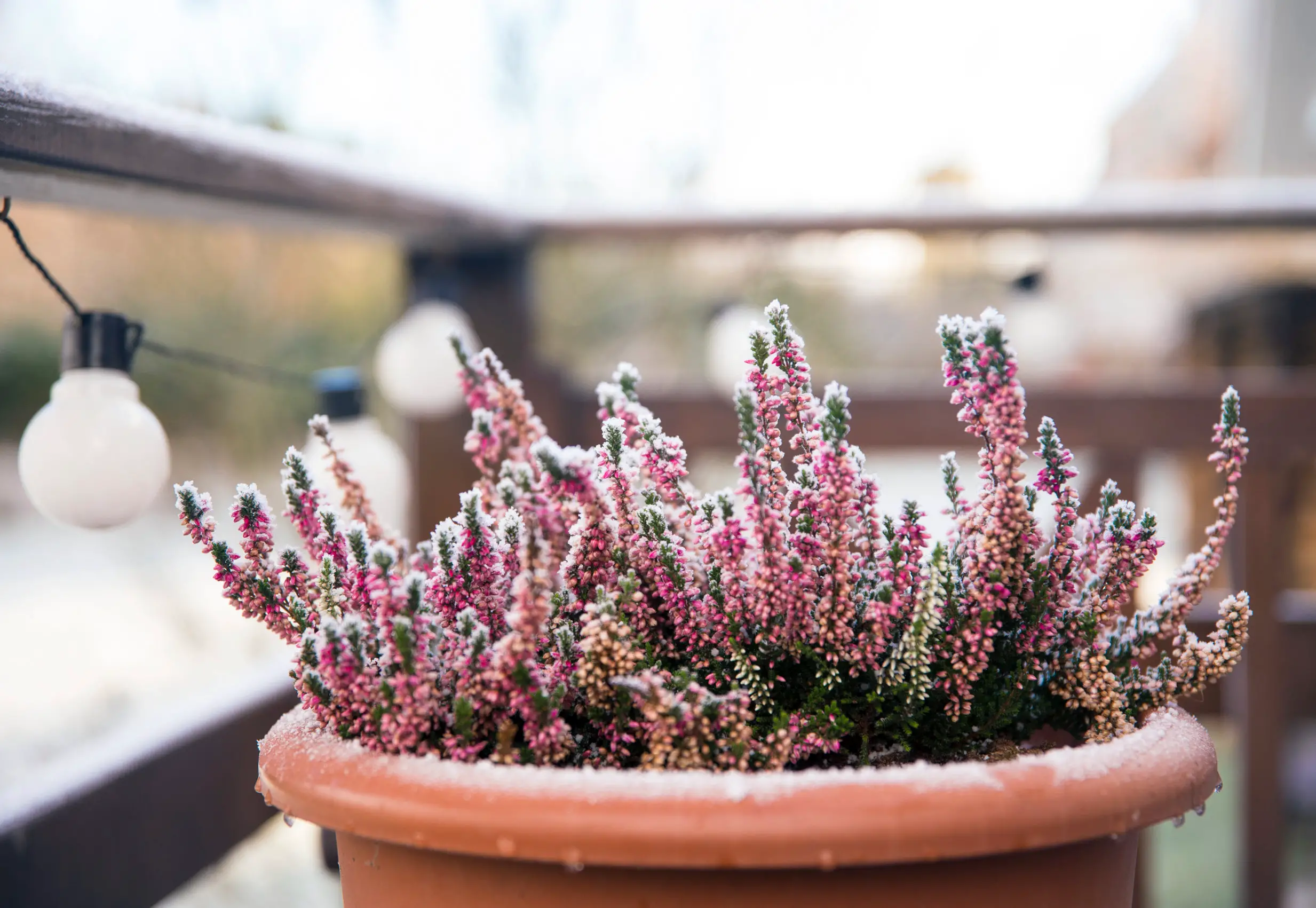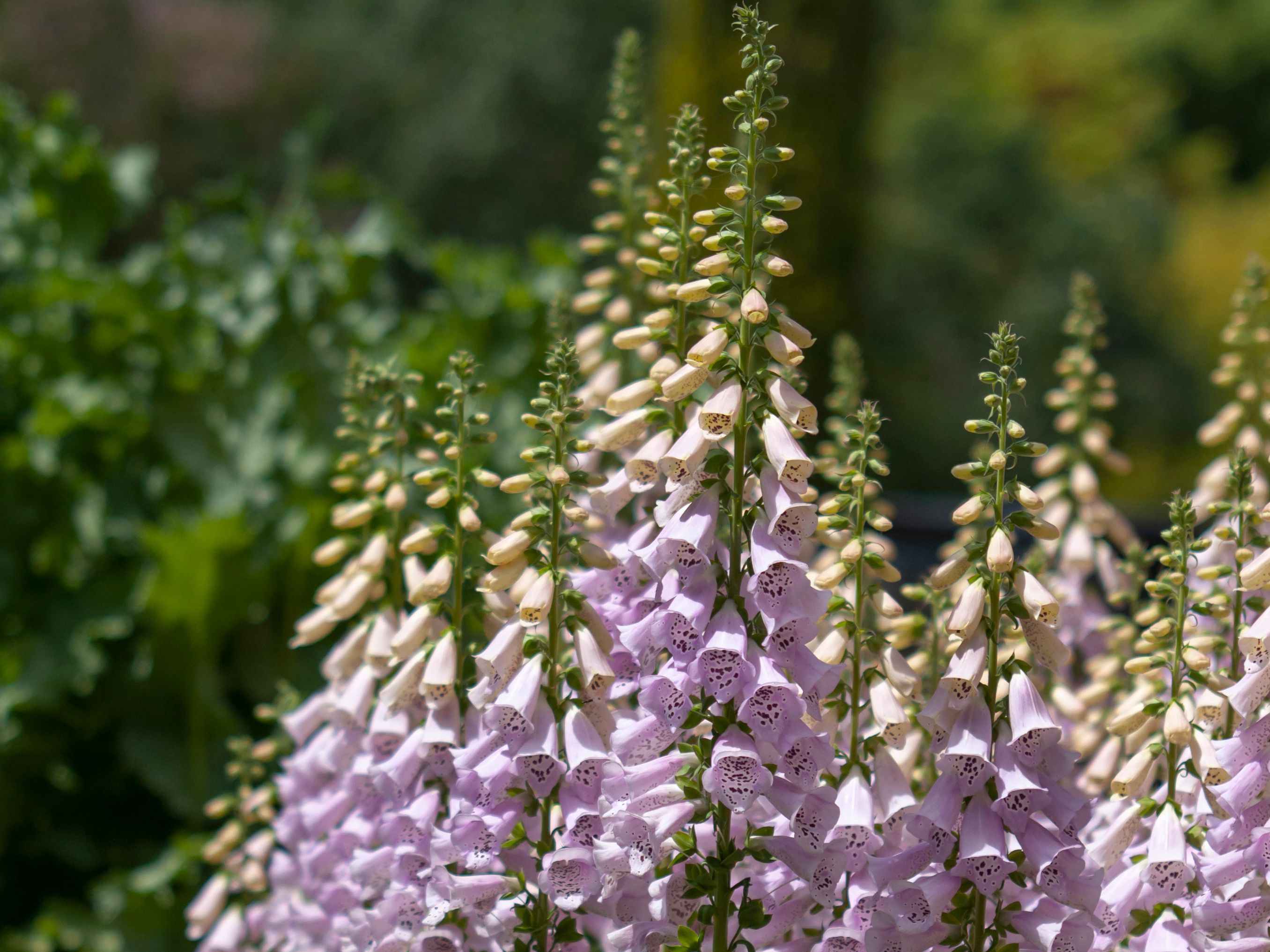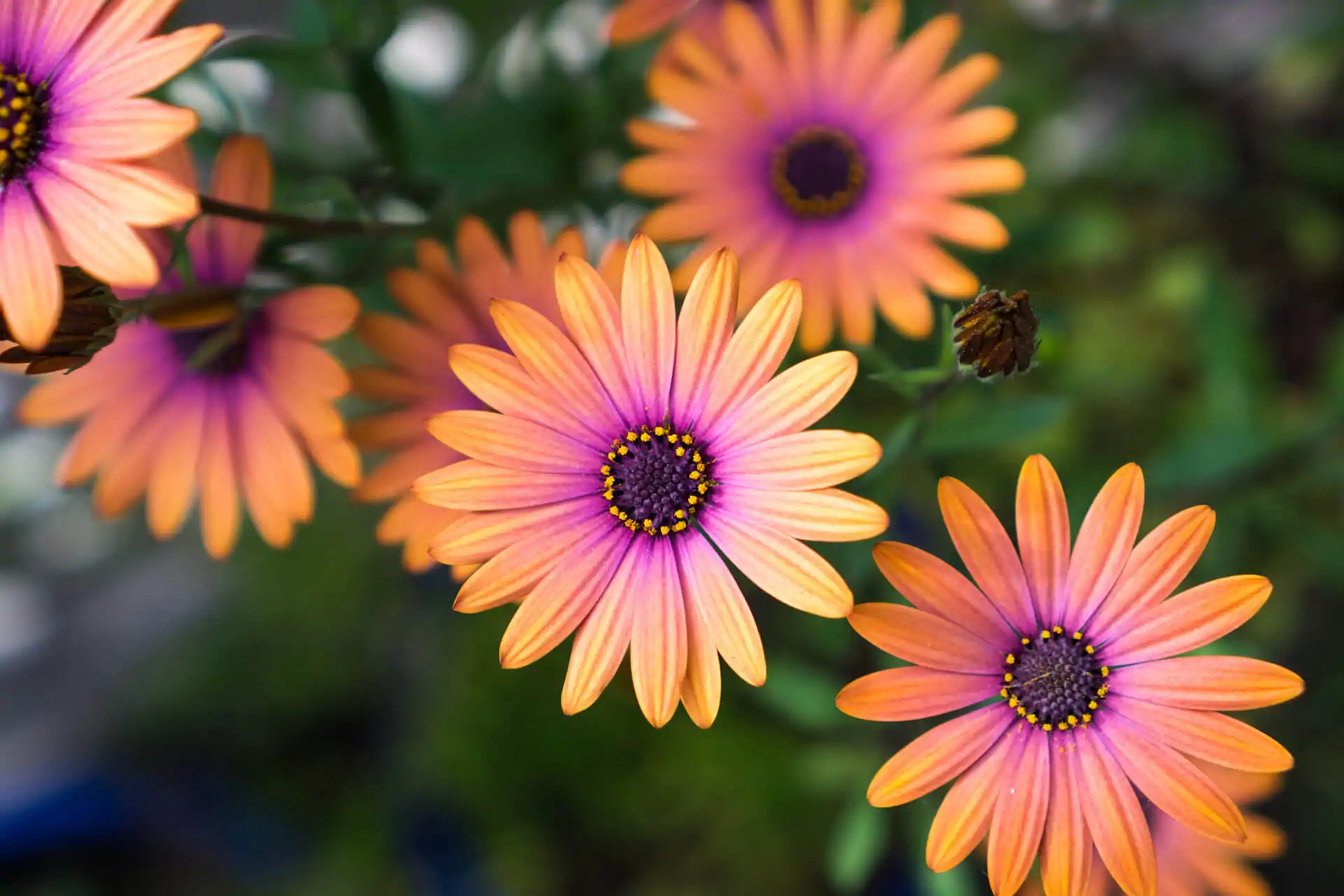Home>Gardening News and Trends>Latest News>When Do Perennials Go On Sale


Latest News
When Do Perennials Go On Sale
Modified: January 22, 2024
Stay up to date with the latest news on when perennials go on sale. Don't miss out on the best deals for your garden!
(Many of the links in this article redirect to a specific reviewed product. Your purchase of these products through affiliate links helps to generate commission for Chicagolandgardening.com, at no extra cost. Learn more)
Table of Contents
Introduction
Perennials are a popular choice for both novice and experienced gardeners, as they offer year after year of beautiful blooms and foliage. However, the cost of purchasing these plants can sometimes be a deterrent for those on a tight budget. Luckily, there are opportunities to purchase perennials at a discounted price, making them more accessible to all gardening enthusiasts.
The timing of when perennials go on sale can vary depending on various factors, such as the nursery’s inventory, the region’s climate, and the demand for certain plants. Understanding when and where to find these sales can help you save money while expanding your garden.
In this article, we will explore the different factors that can affect when perennials go on sale, the various stages of the gardening season when sales occur, and the factors to consider before making a purchase.
So, if you’re ready to learn how to get the best deals on perennials and make your garden dreams a reality, read on!
Factors Affecting Perennial Sales
Several factors can influence when perennials go on sale at nurseries and garden centers. By understanding these factors, you can better anticipate and take advantage of discounted prices and promotions. Here are some key factors to consider:
- Seasonal Demand: The demand for perennials fluctuates throughout the year. Garden centers often reduce prices during periods of lower demand to clear out their inventory and make space for new plants. This typically happens during transition periods between seasons, such as late summer or early spring.
- Plant Condition: Nurseries may put perennials on sale if they are not in peak condition. This could include plants with slight cosmetic imperfections, rootbound specimens, or those nearing the end of their flowering season. These plants may still be perfectly healthy and can thrive with some extra care.
- Supplier Deals: Garden centers sometimes receive special offers or discounts from their suppliers. These promotions can be passed on to customers through sales and discounts. Keep an eye out for special events or sales organized by the nursery to take advantage of these supplier deals.
- Inventory Management: Nurseries need to manage their inventory effectively. If they have an excess of certain perennial varieties, they may put them on sale to reduce stock levels. This is particularly common towards the end of the growing season when nurseries want to clear out their remaining inventory.
- Weather Conditions: Weather plays a significant role in perennial sales. Unfavorable weather conditions, such as excessive rain or heatwaves, can impact plant sales as people may be hesitant to purchase and plant during these times. To encourage sales during challenging weather, nurseries may offer discounts or promotions.
It’s important to keep in mind that these factors can vary depending on the region and the specific nursery or garden center. It’s worth checking with your local nurseries for any upcoming sales or promotions to get the best deals on perennials.
Early Season Sales
Early in the gardening season, many nurseries and garden centers offer sales on perennials as a way to attract customers and kickstart the planting season. These sales usually occur during late winter or early spring, when gardeners are eager to get back into their gardens and start planting.
There are a few reasons why early season sales are common. First, nurseries want to clear out any overwintered perennials that they have kept from the previous season. These plants may still be in good condition but are typically discounted to make room for new stock.
Another reason for early season sales is that some perennials prefer to be planted early in the season to establish their root systems before the heat of summer. By offering discounts, nurseries encourage gardeners to buy and plant these perennials at the ideal time.
During early season sales, you can find a variety of perennial plants at discounted prices. It’s a great opportunity to stock up on commonly grown perennials like daylilies, hostas, coneflowers, and ferns. These plants tend to be hardy and adaptable, making them suitable for a wide range of growing conditions.
To take advantage of early season sales, keep an eye out for advertisements from local nurseries and garden centers. Many businesses will announce their sales in local newspapers, online forums, or their own websites. Visit nurseries early in the morning during the sale to secure the best selection of plants. Remember to check the quality of the plants before purchasing and ensure they are suitable for your garden’s growing conditions.
By participating in early season sales, you can save money while getting a head start on your garden. It’s an excellent opportunity to add new perennial varieties to your landscape and enjoy their beauty for years to come.
Mid-Season Sales
As the gardening season progresses, nurseries often have mid-season sales to entice customers and make space for new arrivals. These sales typically occur in the peak of the summer months when many perennials are in full bloom.
One reason for mid-season sales is to provide opportunities for gardeners to fill any gaps in their garden beds. Sometimes, plants that were originally planned for a particular space may not perform as expected or may not have survived. Mid-season sales allow gardeners to find replacement plants at discounted prices.
Nurseries may also put perennials on sale due to overstock or surplus inventory. They may have ordered more plants than expected or received a large shipment from their suppliers. To avoid overcrowding and maintain healthy stock, nurseries offer discounts on excess plants to encourage sales.
During mid-season sales, you can find a wide range of perennials on offer. This includes not only the popular and widely grown perennials but also lesser-known varieties that nurseries are looking to move off their shelves. It’s an excellent opportunity to explore and experiment with new and unique plants for your garden.
To make the most of mid-season sales, visit nurseries on a regular basis to check for any promotions or discounted sections. Pay attention to signs or banners advertising sales, as well as online channels such as nursery websites and social media pages for updates. It’s important to note that the availability of specific plants during mid-season sales can vary, so be sure to act quickly if you find something you like.
When purchasing perennials during mid-season sales, check the plants for signs of health and vigor. Avoid plants that look wilted or have yellowing leaves, as these may indicate underlying issues. Opt for well-established plants with a strong root system for the best chance of success in your garden.
Mid-season sales provide an excellent opportunity to expand your perennial collection, fill in empty spaces, and discover new and exciting plants. Take advantage of these sales to enhance the beauty and diversity of your garden without breaking the bank.
End of Season Sales
As the gardening season draws to a close, nurseries and garden centers often hold end-of-season sales to clear out their remaining inventory and make way for new stock in the upcoming season. These sales usually occur in late summer or early fall, making it a great opportunity to snag some great deals on perennials.
During end-of-season sales, nurseries offer significant discounts on a wide range of perennials. This is the time to find bargains on plants that may still be in excellent condition but have finished blooming for the year or are winding down. With proper care, these perennials can still establish themselves in your garden and come back strong the following year.
End-of-season sales offer a chance to get robust and established perennials at a fraction of their original price. Nurseries want to sell these plants before winter arrives to avoid potential loss due to low temperatures or adverse weather conditions.
In addition to perennials that have completed their blooming cycle, you can also find discounted prices on plants that may not be as popular or commonly grown. These can include unique or specialty varieties that nurseries are looking to clear out. If you’re open to trying new and different plants, end-of-season sales can be a treasure trove of hidden gems.
To make the most of end-of-season sales, keep an eye out for advertisements or notifications from local nurseries and garden centers. Many businesses will advertise their sales through local newspapers, websites, or social media channels. Visit nurseries early in the sale period to ensure the best selection of plants.
When buying perennials during end-of-season sales, carefully inspect the plants for any signs of disease or distress. While it’s normal for some plants to show signs of wear and tear at the end of the season, avoid purchasing plants with extensive damage or signs of severe stress.
End-of-season sales provide an excellent opportunity to stock up on perennials for the following year’s garden. By taking advantage of these sales, you can fill your garden with a variety of plants while saving money at the same time.
Factors to Consider Before Buying Perennials on Sale
While purchasing perennials on sale can offer great savings, it’s important to consider a few key factors to ensure you’re making a wise investment for your garden. These factors will help you choose healthy and suitable plants that will thrive in your landscape. Here are some factors to consider before buying perennials on sale:
- Plant Health: Assess the overall health of the plants you’re interested in. Look for strong stems, vibrant foliage, and healthy root systems. Avoid purchasing plants with signs of disease, pest infestation, or wilting.
- Growing Conditions: Consider the specific requirements of the perennials you intend to purchase. Ensure they are compatible with the growing conditions in your garden, such as sunlight exposure, soil type, and moisture levels.
- Mature Size: Determine the mature size of the perennial to ensure it will fit appropriately in your garden. Some perennials have a tendency to spread and may require more space. Consider the plant’s growth habit and make sure it won’t overcrowd or overshadow other plants.
- Bloom Time: Be aware of the plant’s bloom time and how it fits into your garden’s overall design. Consider whether the plant’s flowering period aligns with your desired garden aesthetic and if it complements other plants in terms of color and form.
- Longevity: Some perennials have a shorter lifespan while others can persist for many years. Consider the longevity of the plant you wish to purchase and decide if you’re looking for a long-term addition or a short-term flowering extravaganza.
- Propagation: Determine if the perennial is a clump-forming, spreading, or self-seeding plant. This will help you understand its maintenance requirements and if it has the potential to become invasive in your garden.
- Diversify Your Collection: Take this opportunity to diversify your perennial collection and try new varieties. Look for plants that offer different textures, heights, and colors to create an interesting and dynamic garden.
- Research and Planning: Before purchasing, conduct research on the specific perennial varieties you’re interested in. Understand their growth habits, maintenance needs, and any potential issues they may encounter. Plan where you will place them in your garden to ensure they have the best chance of thriving.
By considering these factors and conducting thorough research, you can make informed decisions when purchasing perennials on sale. This will increase the likelihood of successful establishment and long-term enjoyment of these beautiful plants in your garden.
Conclusion
Perennial sales provide an excellent opportunity for gardeners to expand their plant collections while saving money. Understanding the factors that influence when perennials go on sale can help you take advantage of these opportunities throughout the gardening season.
Early season sales offer a chance to purchase overwintered plants and establish them in your garden before the summer heat arrives. Mid-season sales allow you to fill in any gaps in your garden and explore new varieties at discounted prices. End-of-season sales provide an opportunity to find robust plants that may have finished blooming for the year but can still thrive in your garden next season.
Before buying perennials on sale, it’s important to consider factors such as plant health, growing conditions, mature size, bloom time, longevity, propagation tendencies, and diversifying your collection. Conducting research and planning ahead will help ensure you select the right plants for your garden and maximize their chances of thriving.
Keep an eye out for advertisements and promotions from local nurseries and garden centers to stay informed about upcoming sales. Visit nurseries early in the sale periods to secure the best selection of plants, and carefully inspect the plants for signs of health and vigor before making a purchase.
By being knowledgeable and strategic in your perennial purchases, you can create a stunning and diverse garden while staying within your budget. So, take advantage of the sales, explore new plant varieties, and enjoy the beauty and longevity that perennials can bring to your outdoor space.










